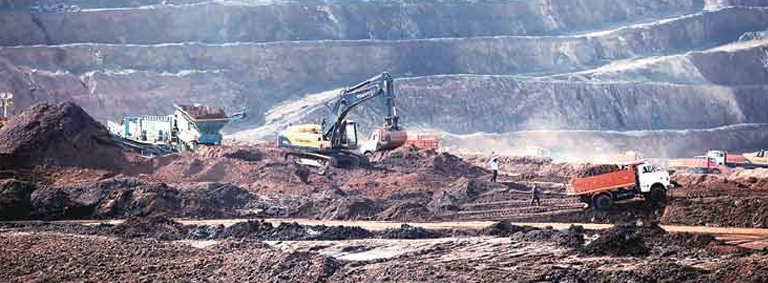Superlatives like rich mineral geology, abundant mineral reserves, expansive coastline for exports and an ambitious growing nation have been widely publicised over the years, and yet the contribution of mining (non-fuel) to the GDP has been largely to the tune of 2%.
Marred by lack of investments in exploration, absence of direct transfer from exploration to production, high taxation regime, long queues for approvals and commentary on impact on biodiversity have over the years, negated all the positives created by the mining industry. And the result we have is an import bill of $106 billion (21% of total imports) on account of the mining and metal sector.
Every 1% increment in the growth rate of mining and quarrying results in 1.2-1.4% increment in the growth rate of industrial production and correspondingly, an approximate increment of 0.3% in the growth rate of India’s GDP. A sustainable and viable mining sector is paramount to meet our growing demand and will be a core contributor to India’s growth ambition of USD5 trillion economy.
During these unprecedented times our Hon’ble Prime Minister has given the most important push for ‘Atmanirbhar Bharat’. The message has been loud and clear – India as a nation has to be self-reliant, each and every sector wherein the country currently imports has to be analysed and we need to take a 360 degree turn from being net importers to becoming net exporters.
Taking heed of the PM’s clarion call, our Hon’ble Finance Minister has announced multiple legislative reforms for the mining sector which shall push the sector to new horizons of growth.
Introduction of Single Stage Seamless Composite Exploration cum Mining cum Production regime will attract large investments and encourage private participation in the mining sector, thereby boosting mineral production in the country. This will also provide an opportunity to resolve issues pertaining to old legacy blocks and proceed with granting them (572 in number) stuck under 10 a 2 (b) of the MMDR Act to the concession holders who, over the years, have not only spent on exploration and development of the blocks but have also established connect with the local community.
Aluminium is a metal of strategic importance due to its role in energy security, national defence, aerospace, automobile, infrastructure, packaging etc. and India is blessed with the 5th largest reserves of coal and bauxite globally, which are two primary raw materials for aluminium production. The government’s decision for joint auction of coal and bauxite blocks is a step in the right direction. We should not squander this natural advantage of key raw material availability by fixing high reserve prices as done currently for bauxite, rather both the government and industry should work jointly to make the Indian aluminium industry globally competitive and meet our domestic demand wherein imports have captured 60% of the domestic market space even when enough domestic production is available. (Forex loss to the tune of $5.5 billion ~ Rs40,000 crores.)
The auction of mines for commercial purpose will bring on more competition and transparency, while enhancing the efficiency of mineral production alongside ensuring availability of primary raw material to the Indian manufacturing units.
Launch of the National Mineral Index along the lines of the National Coal Index will provide a benchmark mechanism. It will streamline the process of determination of average sales price and royalty calculation replacing the current system wherein different methodologies are followed for different minerals. This can effectively resolve concerns of royalty on royalty. With these bold reforms, the effective tax rate on the mining sector which today is above 60% can be rationalised to the range of 30% which is what the global peers enjoy. A healthy taxation regime will encourage investors to promote value addition in the country and reduce imports.
Mining as a sector creates employment opportunities in the most remote areas which otherwise have limited potential for other economic activities. This brings a transformational change in various aspirational districts by connecting them to the mainstream and enable local job creation. Further, mining creates 13x more jobs than agriculture and 6x more jobs than manufacturing. A single mining job creates 10 indirect jobs. Manufacturing and mining employ a total of 58 million people, 12.5% of the nation’s total workforce. In these unforeseen times, the sector is apt for creating multiple livelihood opportunities.
Bold mining reforms announced by the government clubbed with expeditious approval processes can truly make the nation ‘Atmanirbhar’, substitute imports worth $100 billion with domestic production and in the process, can create over 50 million local livelihood opportunities for the youth of the nation.
The author is Co-Chair, FICCI Mining Committee & CEO-Alumina Business, Vedanta Ltd.





